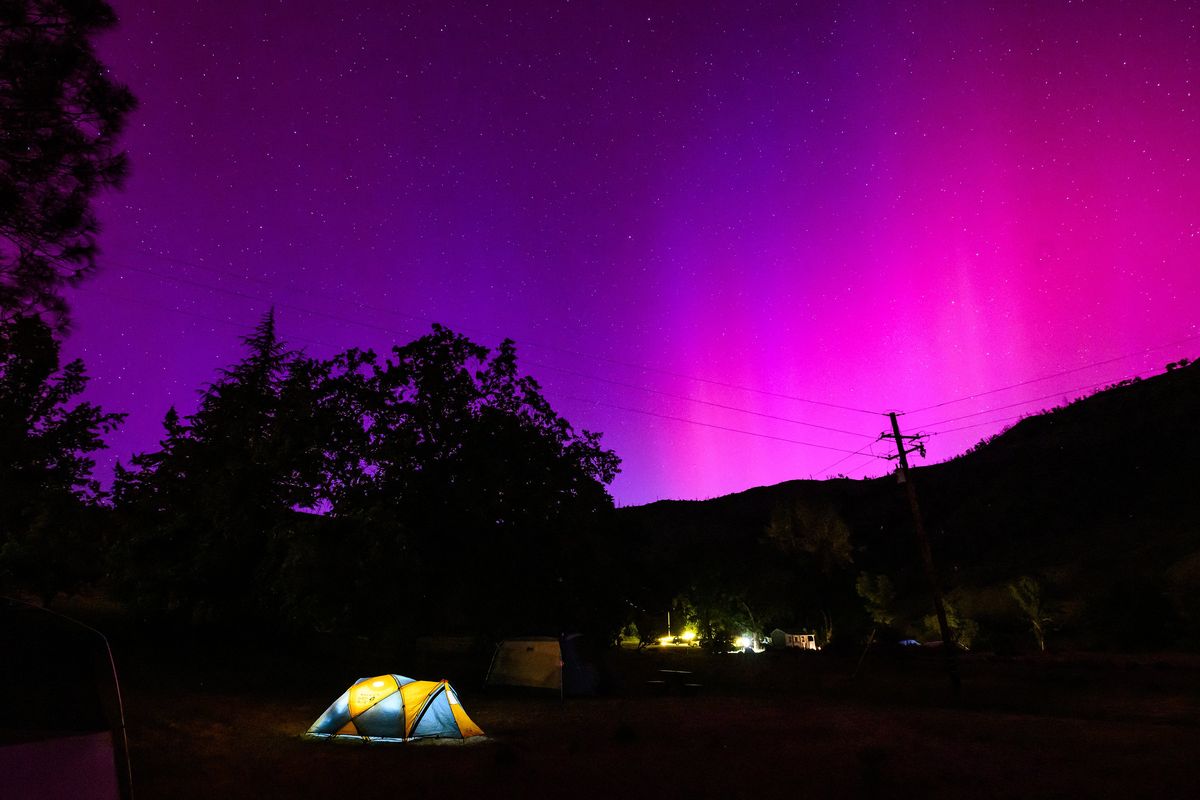Loved the northern lights? Check out these phenomena next

The night sky dazzled people across the United States and Europe on Friday evening as an extreme geomagnetic storm brought aurora displays not usually seen at lower latitudes – beautiful streaks of green, purple and pink lights.
Like the total solar eclipse in April, the aurora offered a chance for people to marvel at the natural world.
If you miss it, though, you can find awe in many of Earth’s other phenomena.
From fleeting meteor showers to year-round beauty, here are some wonders to look for.
Lunar eclipses
Next year will see a total lunar eclipse on March 14, when the moon moves into Earth’s shadow. It gives the moon a deep red hue, and all you need to see it is a clear sky.
A partial lunar eclipse will happen in September, less spectacular but also visible with the naked eye: Viewers will see “a little bite” taken out of the moon, and the moon will appear slightly darkened, said William Teets, director of the Dyer Observatory at Vanderbilt University.
Meteor showers
In mid-August, the Perseid meteor shower will peak, offering the year’s best chance to see dozens of meteors streaking through the sky, according to NASA.
The best viewing is in the predawn hours, and the peak is predicted for Aug. 12, with up to 100 meteors per hour. Wait for the moon to set around 1 a.m. local time, then head to a dark location, recommended Robert Lunsford of the American Meteor Society.
Peak time will be 3 to 5 a.m.
Enthusiasts should also circle their calendars for the Geminids shower in December 2025, which won’t be obscured by moonlight, Lunsford said, and the 2027 Perseids, when several hundred meteors an hour are predicted to streak across the sky.
Meteor showers, which happen annually, are among the “easiest things to observe and prepare for” because viewers only need clear weather and a dark area, Teets said.
“Find as dark a location as you can, put a blanket out on the ground and just lie back and take in as much of the sky as possible,” he said.
Parade of planets
Six planets will align June 3, giving viewers from Earth’s Northern Hemisphere an unusual chance to see them all at once.
Jupiter, Mercury, Mars, Saturn, Uranus and Neptune will line up in the predawn sky. The first four will be clear to the naked eye, and all six will be visible through binoculars or a telescope, according to Astronomy magazine.
The moon will also be visible between Uranus and Mars.
Bioluminescence
Light displays aren’t just for the skies – they can also been seen in the oceans when bioluminescent organisms light up and create an otherworldly glow. Sometimes bioluminescence is visible near the water’s surface, often triggered by waves, boats or other disturbances, according to the Smithsonian Institution.
Bioluminescence can’t be predicted, but travelers can try to witness spring and summer displays in spots throughout the world, such as California, Puerto Rico and Australia.
Other ways to find a glow: Visit the New Zealand glowworms at Waitomo Caves or catch the synchronous firefly displays in the Great Smoky Mountains.
Year-round wonders
Natural beauty is all around, and there are plenty of places where you can find a sense of awe anytime you want.
• Visit a national or state park. Natural wonders are always available, from the Grand Canyon to Niagara Falls, the volcanoes of Hawaii to the geysers of Yellowstone. Many track seasonal sights, too, such as bird and butterfly migrations, Yosemite’s “firefall” and wildflower super blooms across western desert swaths.
• Travel to see the northern lights. Though their appearance Friday in the lower latitudes was rare, aurora displays can reliably be seen in the Arctic Circle. Visitors chase the lights in Alaska and parts of Canada, Norway, Sweden, Finland and Iceland. The lights can also sometimes be spotted in northern contiguous U.S. states such as Maine, Michigan, Wisconsin and Minnesota.
• Go stargazing. Search for stars anywhere away from bright city lights. Drive at least 45 or 60 minutes from a big city, or check out a designated Dark Sky place – there are 138 places in the United States, many in the Southwest, along with spots in the East, Midwest and West. Bring a blanket, lie back and use your eyes, Teets recommended. In the summer and fall, the Milky Way will glow across the sky. Viewers can also use night-sky phone apps to learn constellations, and binoculars can help you scan the sky for star clusters and galaxies.
“It gives us a little way to take a break and just enjoy what the universe has out there for us,” Teets said. “It just inspires this sense of awe and wonder.”